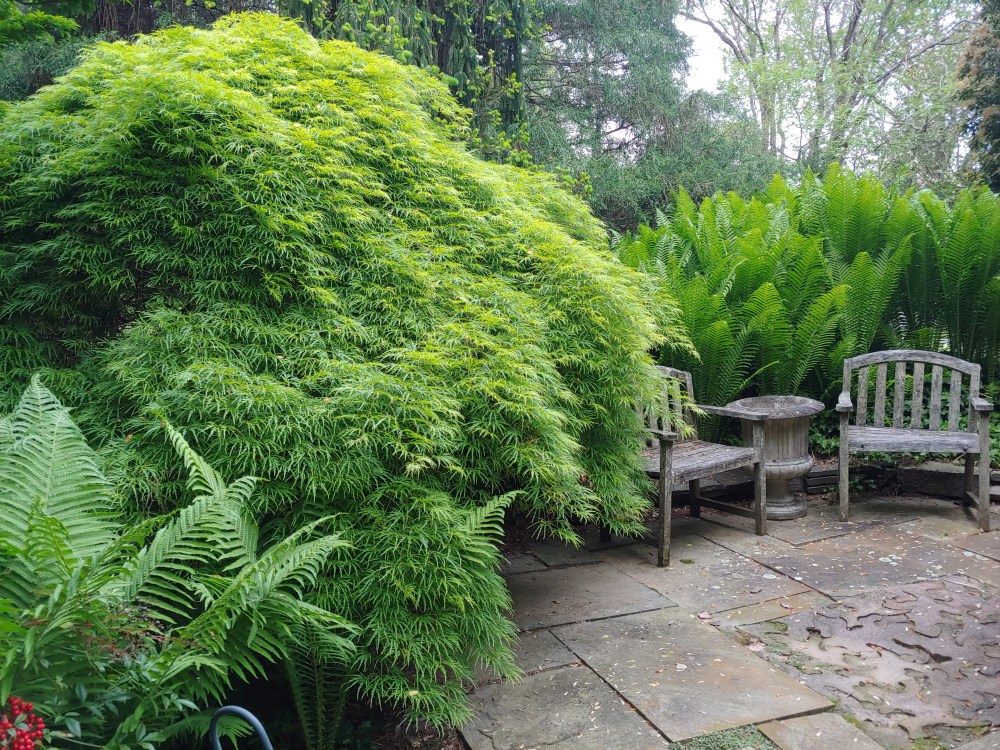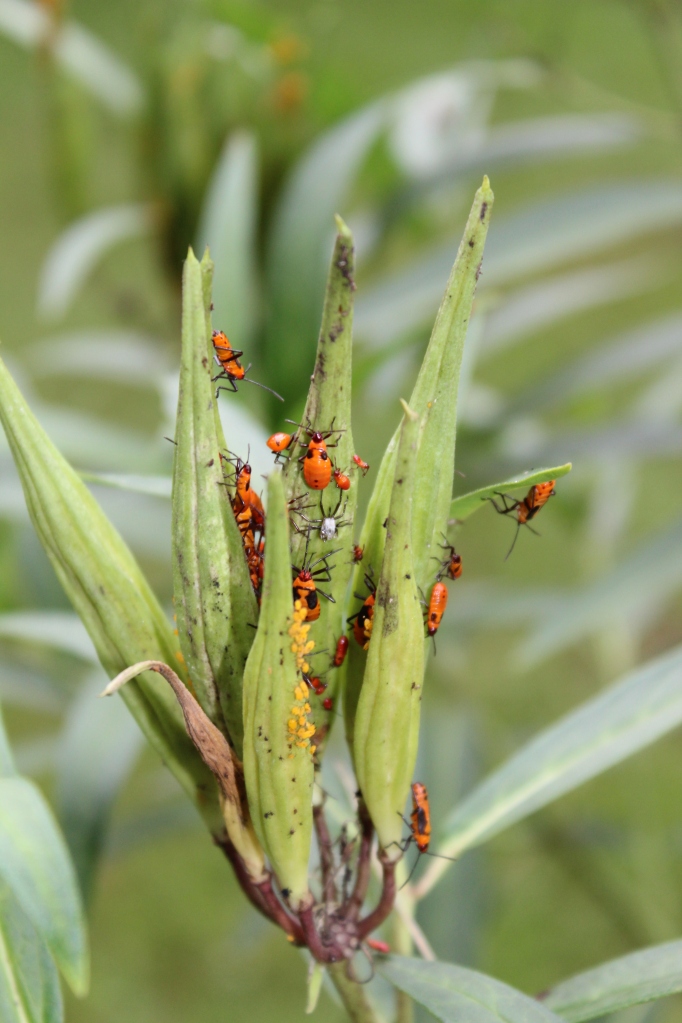So many gardens are named, with signs prominent by the roadside. Some designations are historical, I presume, but others are gardener given. Some are humorous (Dave’s Folly), but most seem presumptuous to my thinking. This garden, at least, is not so grand as to warrant a title, though several come readily to mind. Most would be inappropriate to post out front for the public to see.

I use terms as simple as possible to describe the garden. This is Dave’s Garden (and Barbara’s), though no sign will say so. There is no jewel garden, no edible or pollinator garden. There are the front, the rear, the side, and the driveway. The overly damp ground at the low end out back is not the Almost Dismal Swamp, but described as the lower third of the rear garden, which give or take a few hundred square feet, describes it precisely. No more romantic terms are necessary, and if you haven’t noticed I am not much of a romantic (ask my wife), at least not overtly.
I do not doubt for a moment that there is romance in the garden. This is a place for contemplation, relaxation, for love of all things living, but it seems unnecessary to do anything more than to appreciate this every day. A title, a sign doesn’t make it so.

The garden has been constructed to suit my preferences. There are perennial flowers, but this is not a perennial garden. Flowers have been shoehorned between favored trees and shrubs, but the garden is more than foliage and flowers. The variety of creatures attracted to the food, shelter, and water in the garden are also treasured.
Long ago, so long that I can’t place the decade of the three since this garden was begun, I must have sprayed to kill bugs. Probably caterpillars that were eating some treasure, or perhaps there were beetles, and certainly there were aphids. In the long while since I stopped spraying all have returned to varying degrees, though few enough as dragonflies, birds and other creatures keep the most destructive beasts in check.
This year, I miss the aphids on the butterfly weeds (Asclepias incarnata, above). Why there are none, I can’t figure. Every year they come just as the flowers fade, but not this summer. Almost always, their invasion cripples the seed making process, so yes, it would be best to have seeds and little butterfly weeds sprouting annually. But, the aphids are fascinating, and then come orange beetles to feast until the butterfly weed finally collapses under nature’s violence.

Dragonflies are a particular treasure. The koi pond is edged by tall irises, cattails, sweetflags, and Joe Pye weeds, perfect landing spots for dragonflies. From this perch they launch on line across the pond, snatching tiger mosquitoes or whatever minute creatures veer into their path. Just behind the pond there is a constant buzz from pollinators taking full advantage of mountain mint’s (Pycnanthemum muticum) bounty. I get nose to mandible with bees and wasps. They are completely distracted by their feeding, and uninterested in my closeness. And then clouds move in, and all disappear.

There is something flowering in the garden every day of the year, even in winter when mahonias and witch hazels glow from beneath a blanket of snow. This is my labor of love, a place to be dazzled by colors and textures, by sounds of falling water and birds, and the breeze whistling through the treetops. A title is not necessary to enhance my enjoyment.

So beautifully written.
Thank you for sharing.
Lauren Henley, Associate Broker
Long & Foster Realtors
5702 Grove Avenue
Richmond, VA 23226
O) 804-288-8888
C) 804-908-9121
[email protected]
http://www.longandfoster.com/laurenhenley
Licensed in the Commonwealth of VA
This is one of my favorite posts from you. Thank you for writing it!
Simply magical…no name needed!
Very nice commentary to compliment the beautiful pictures on this one.
Your gardens are so beautiful! Do you not have a deer problem? They eat my roses and host as no matter what I use to keep them away.
There are deer in the neighborhood, and evidence that they regularly travel through the garden. The deer population density is not as high as some areas, but if I don’t spray the repellent every month my hostas disappear in a hurry. I have learned plants that deer prefer in spring and summer, and some that they care about only in winter. I’ve used several deer repellents over the years, and until a few years ago I alternated two brands with differing ingredients with different taste and smell. All worked if I remembered to spray on time, but now I spray Bobbex and in alternating months I add a little bit of a hot pepper squirrel repellent to give a different taste.
Do you find that the aphids on your butterfly weed jump to other plants nearby and infect them? I chopped off my butterfly weed and milkweed stems when I saw so many aphids, because I was afraid the aphids would then go onto the nearby blueberry bush, Franz Fontaine European Hornbeam trees, and coneflowers. I may just pull out the plants that attract aphids next year, for fear of the aphids spreading throughout my yard.
I rarely find that caterpillars or aphids travel from one type plant to another. I know that aphids are common on milkweeds, and the neighboring plants are not ones likely to be targeted. My observation is that aphids arrive at one time, infesting whatever it is that they’re attracted to, and spend the remainder of the season sucking the life out of that plant. Late last year I chopped out a dwarf crape myrtle that I wasn’t thrilled with anyway, but it was annually infested, with blackened leaves from the honeydew, rather than tying to control the little rascals.
A beautiful entry. Thank you!
And I agree about the aphids. They are selective in which plants they target when. It’s just the nature of the milkweed. I too, am leaving things be.
OK, good to know. I may move all of my milkweeds to another section of my yard, instead of dispersed among my perennials. That way, the “infected” part of my yard can be restricted to one area.
This is a beautiful note
Sent from the all new AOL app for iOS
Lovely blog. I admire your deep connection to nature. Can you please list the variety of tall ferns you have growing next to the maple in the topmost photo? They are so stately.
These are Ostrich ferns, transplanted from a clump of natives at the edge of the property. Ostrich and the similar native Lady ferns are spreaders that require a bit of management to restrict their growth, but they will grow in damp areas and can be stretched into part sun, so they can be useful in the right spots.